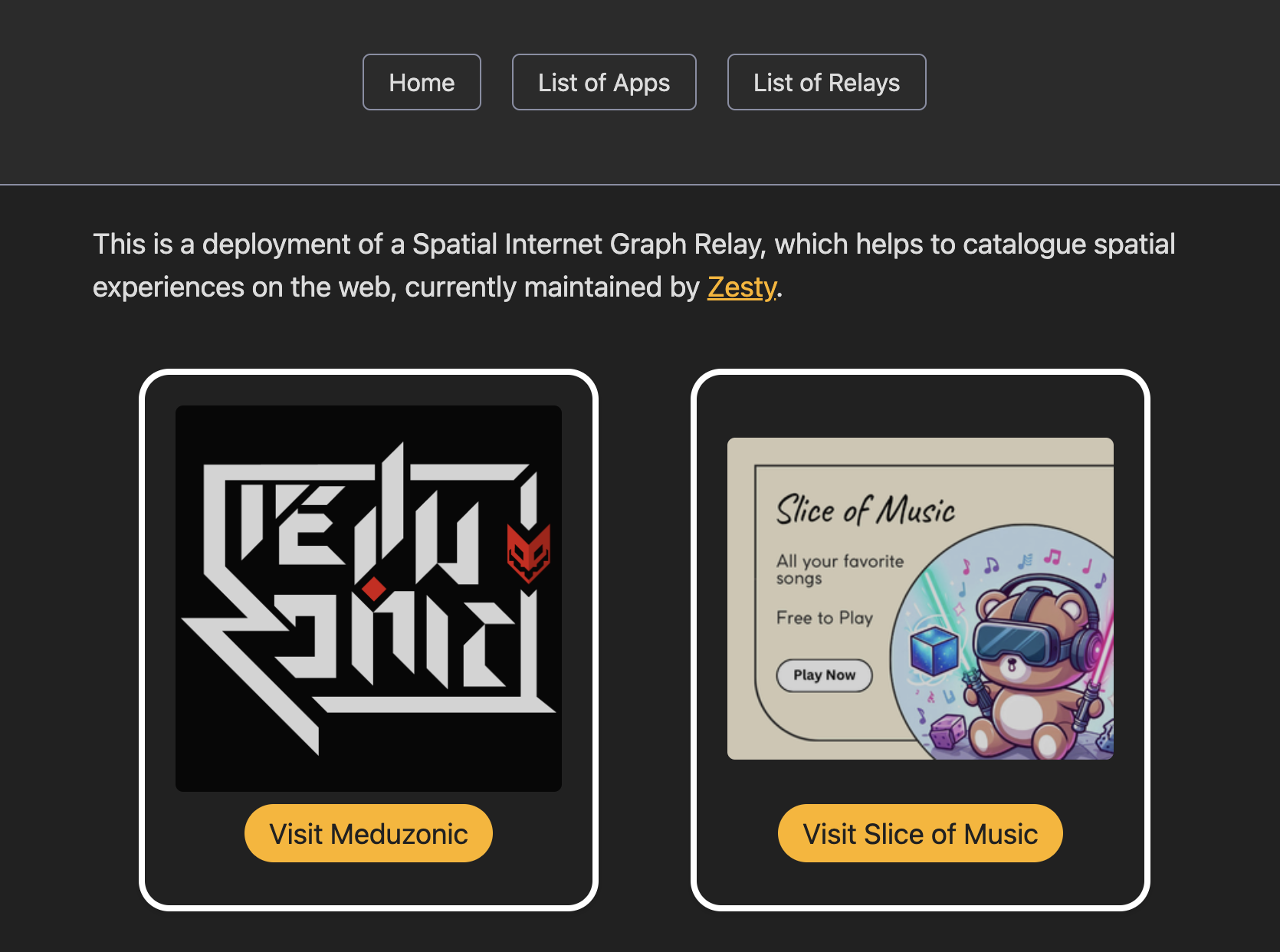About
Relays serve as consensus-building servers which index and provide exposure for spatial web apps; beacons are added within spatial web apps to verify ownership and to expose the app to relays. You can see an example of a live relay here, hosted by Zesty.
Relays ship with a default front-end that serves as a visual directory for users surfing the spatial internet to find apps that may be of interest to them. We'd like to stress again how important it is for these websites to be actually used by users to find new apps, and so any feature (such as search/recommendation) that help users do this will be prioritized. Of course, there may be relay operators who will not want to run a front-end, so we will modularize the core features of the relay so that operators can pick and choose how involved they want to be.

Using the ActivityPub standard, DSIG has the ability for relay operators to "follow" each other. Following is a unidirectional action, and if relay A follows relay B, this means that relay A's directory of apps will also include everything that is on relay B's directory. The more frequently an app appears across the network of relays, the implication is that the app is more "reputable," in terms of support given by the community. This is what we mean by building consensus. In this way, the ability to follow is a shortcut for acknowledging that a particular relay's set of apps on its directory are more reputable. Relay operators will of course be able to manually edit which apps appear on their indexed list.
By using the ActivityPub standard, DSIG can be easily integrated into existing social networks such as Mastodon, etc. in order to allow users to follow the activity of relays and “like” indexed apps.